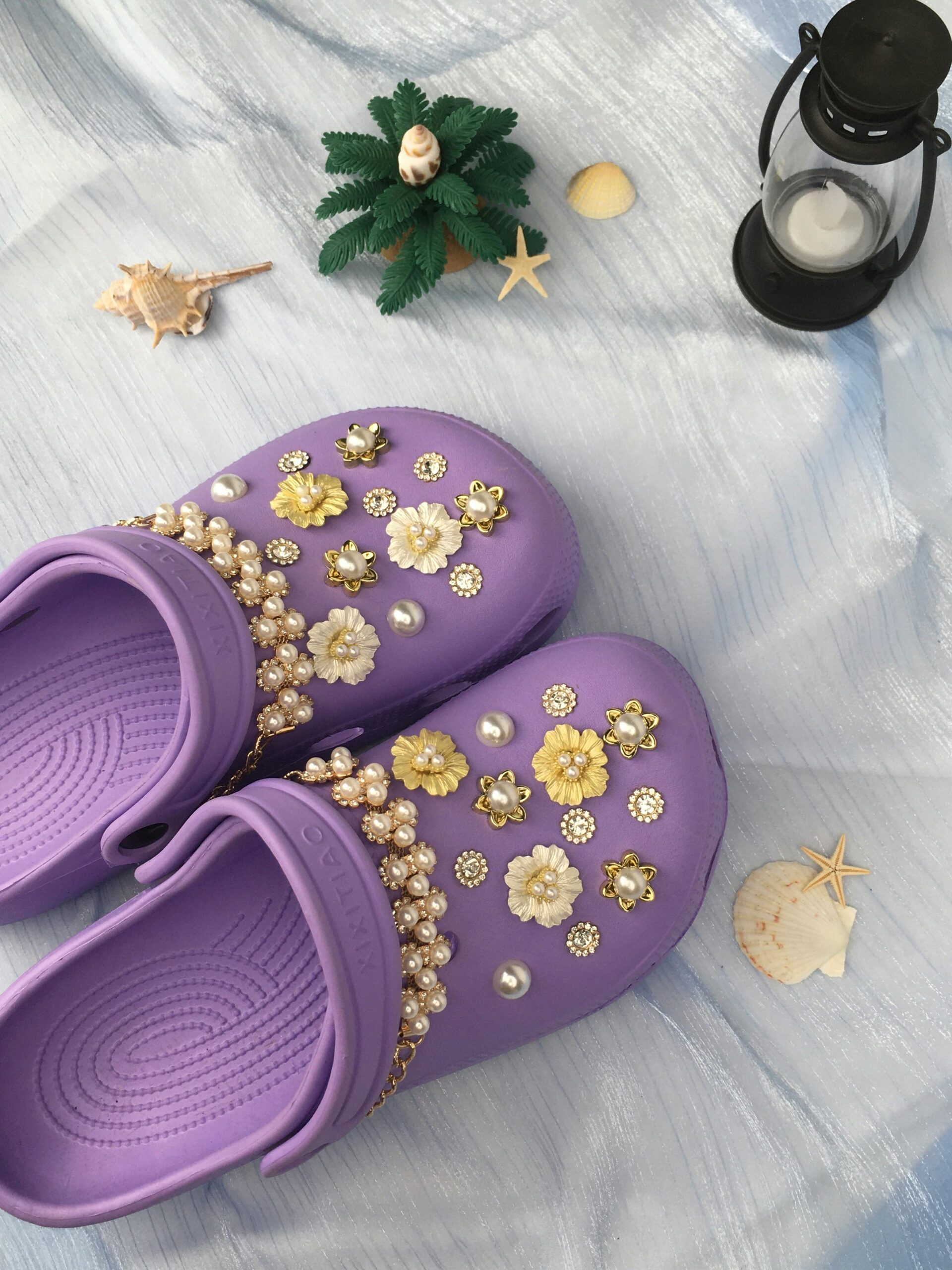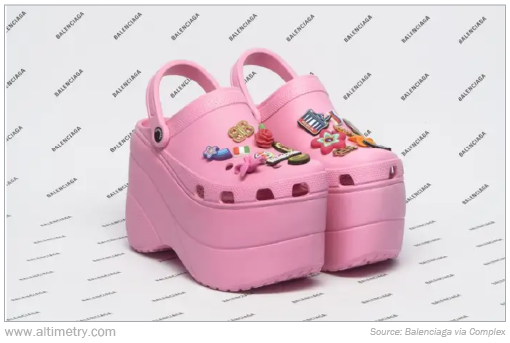 First, they laughed... Then, they lined up to fork over hundreds of dollars...
First, they laughed... Then, they lined up to fork over hundreds of dollars...
Novelty shoemaker Crocs (CROX) had survived for years on its one-note model of selling clogs in a rainbow of colors.
The shoes were originally intended to be worn on boats. Their material was waterproof and anti-slip... and they floated if they fell in the water. Along with the shoes, Crocs offered little rubber accessories called "Jibbitz."
But clogs and Jibbitz weren't enough to build the company into a powerhouse. And customers quickly grew tired of the same old product.
Crocs nearly went bankrupt during the Great Recession. Operating margins fell from around 13% in 2011 to practically nothing by 2016. Crocs had become a symbol of all things uncool.
That's when the company made a move nobody was expecting...
 In 2017, Crocs teamed up with luxury fashion house Balenciaga to launch a shocking collaboration...
In 2017, Crocs teamed up with luxury fashion house Balenciaga to launch a shocking collaboration...
They designed a pair of platform Crocs, priced at a jaw-dropping $850...
Folks on social media couldn't stop laughing. Twitter erupted with memes and jabs, mocking the absurd price tag for a cheap foam shoe. It seemed like something people would make fun of, then forget.
But they didn't forget. The online backlash turned into unprecedented demand. When the Crocs went on presale, they sold out in hours.
What started as a quirky, polarizing shoe now had serious buzz – and serious buyers.
Crocs began partnering with even more big names. In 2018, popular musician Post Malone released his first limited-edition pair. They sold out in less than two hours.
Resale prices spiked, and fans eagerly awaited his next drop. When it came, the shoes were gone in under 10 minutes... crashing Crocs' website in the process.
Singer Justin Bieber followed with a collaboration in 2020. His collection, featuring his Drew House brand, was another instant sellout. Again, the resale market went wild. Some pairs went for nearly double their retail price.
 The shoes had become more than footwear... They were a cultural event.
The shoes had become more than footwear... They were a cultural event.
By 2021, Crocs had gone from a meme to a fashion staple. They were part of a broader movement – one rooted in self-expression, exclusivity, and cultural cachet.
The brand's celebrity partnerships became core to its business model. Collaborations created such strong demand that it sometimes overwhelmed Crocs' servers.
That year, Crocs sold more than 103 million pairs, generating $2.3 billion in revenue. Shares are now up more than 870% since 2016.
Not bad for a company that was once made fun of for the same "ugly" shoes.
Folks, as investors, you should always be looking for businesses that have a competitive advantage. They tend to outperform peers without any... and they tend to be rewarded by the market.
If you can't easily identify a company's competitive advantage, chances are it doesn't have one.
In Crocs' case, it used unique collaborations to transform itself from a footwear brand to a powerful merchandising company.
Other businesses can learn a lot from its example.
Regards,
Joel Litman
February 10, 2025



 First, they laughed... Then, they lined up to fork over hundreds of dollars...
First, they laughed... Then, they lined up to fork over hundreds of dollars...


